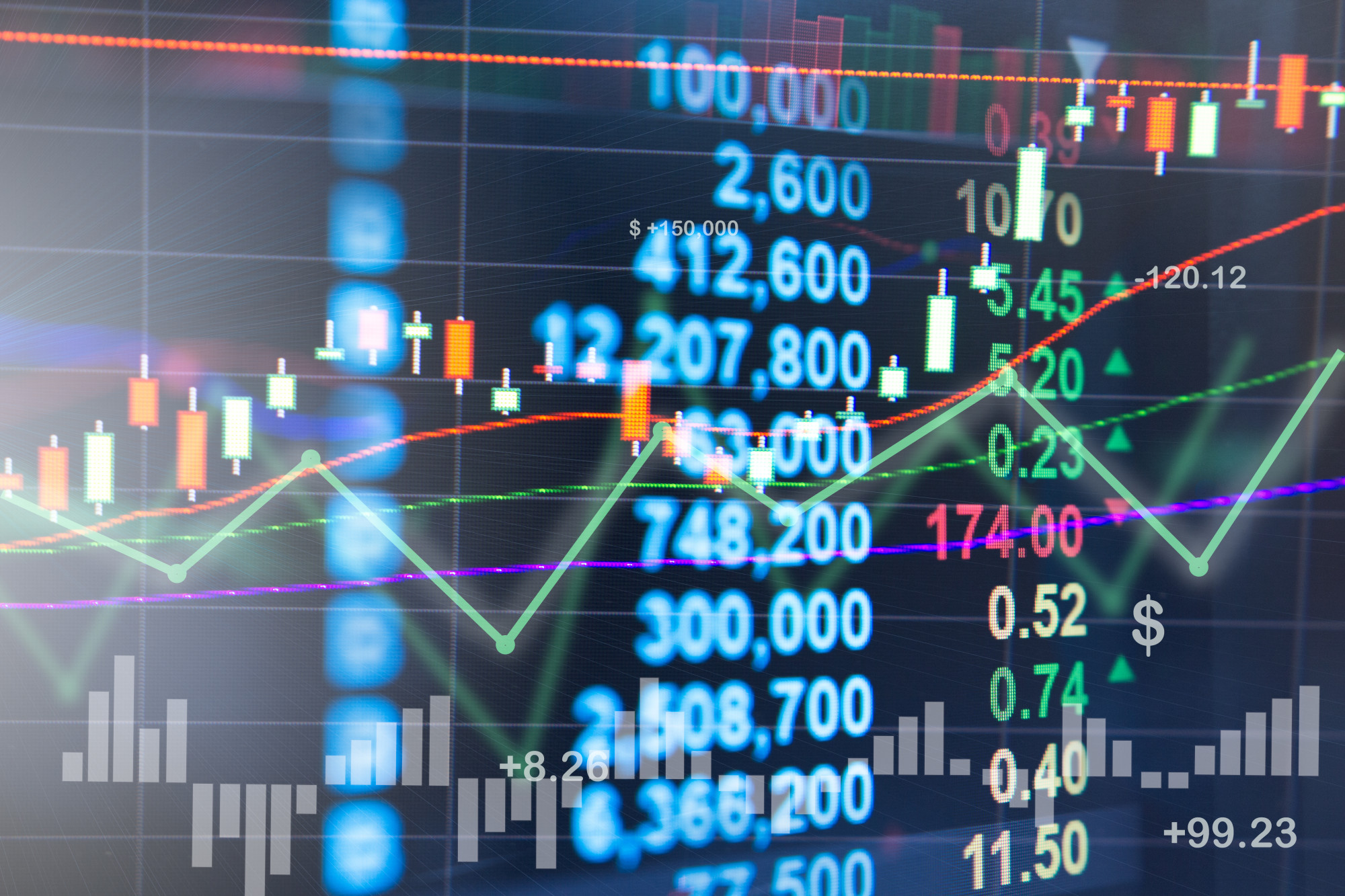Futures vs. Options: What Are the Differences?
For the average layman, the finance world can seem rather intimidating. With a lot of jargon thrown around, how can he not?
However, once you break the terminologies down, you can see how these financial instruments can help you increase your wealth.
In this article, we’ll focus on the futures vs. options debate.
Options and futures are two types of financial derivatives that investors may employ to make price predictions or hedge against potential losses. Both options and futures provide the buyer the right to acquire an asset at a predetermined price on or before a certain date. However, the regulations governing options and futures contracts, and the risks they entail for investors, are not the same.
Read on for our full breakdown of everything you need to know about options trading and futures trading.
What Are Futures?
Futures contracts are what people usually mean when they talk about “futures.” A futures contract guarantees the buyer of the underlying item at a certain price on a specified date in the future. When they buy the contract, they settle on a price. Corn, oil, or other physical commodities or financial instruments like stocks might serve as the underlying asset.
For each underlying asset, futures contracts specify a fixed amount. For instance, contracts for oil futures are traded in lots of 1,000 barrels. In contrast, corn is traded in 5,000-bushel contracts, with each bushel weighing 56 pounds.
Your broker won’t have you put up the whole amount of the contract’s worth when you acquire a futures contract. Instead, you’ll simply need to put down a little down payment, or margin, on the item you want to buy.
Contract prices will change over time. Your broker may want extra collateral if you’ve accumulated a sizeable loss as the contract’s owner.
The vast majority of commodities traders will close a position before the expiry date. The average person does not have enough room to stockpile hundreds of oil barrels or several tons of maize.
With any luck, the proceeds from the sale of a futures contract will more than repay the margin loan, leaving you with a tidy profit.
If you invested $70 in an oil futures contract and the price increased to $75, your profit would be $5,000 ($5 times 1,000 barrels). It’s possible that you’ll just need a few thousand dollars in your brokerage account during this time, but the return on investment might be significant.
Of course, whenever we talk about futures trading, you’ll want a trusted platform like KJ Trading Systems to navigate the minutia and automation for you.
What Are Options?
Basically, you have two main categories you need to keep an eye on. Put options and call options are the two main types of options contracts.
The holder of a put option has the right but not the duty to sell the underlying asset by a given date and time at an agreed-upon price.
The holder of a call option has the right, but not the duty, to purchase the underlying asset by a specific date and for a defined price.
Stocks, bonds, or futures contracts are all examples of underlying assets. Typically, a stock option will cover 100 shares of the underlying stock.
In the case of commodity futures options, the standardized units of measure are the same as those of the futures themselves.
A premium is an extra cost associated with buying an option. Typically, this is a negligible sum in comparison to the contract’s strike price. This is the maximum amount you may lose as an options buyer.
A contract for options can never have a value below zero.
The Issue With Options
However, negative pricing is not only possible but common for futures contracts. This is due to the fact that despite fluctuations in the market price, holders of futures contracts must purchase the underlying product.
Therefore, you would have to pay someone to take the contract off your hands if the asset’s value is less than the cost of gaining actual possession of it. In 2020, oil futures temporarily dropped below zero.
You are betting that the value of the underlying asset will rise before the option contract expires if you purchase a call option. Gambling that the price of an asset will go down is what a put option represents.
Yet, there is always the risk that your options contract may expire with a value lower than what you paid for it, even if you end up on the winning side of the bet. Because the value of your options contract will decrease with time.
Futures vs. Options: Similarities and Differences
Besides the aforementioned distinctions, there are yet more aspects that define options distinctive from futures.
The following are some further noteworthy distinctions between these two types of financial instruments.
Options
Options contracts have a higher level of danger than other types of contracts because of their complexity.
The risks associated with call and put options are comparable. The premium, or cost, paid by an investor to acquire a stock option is a measure of the risk involved in doing so. If the options expire without value, the option price paid will be wasted.
Put option sellers risk a loss greater than the premium received if the value of the underlying shares drops below the strike price of the option. Even if the stock price drops to $10 after the buyer exercises their put option to sell at $50, the seller is still obligated to acquire the shares from the buyer at $50 per share.
Buyers of options have no more risk than the amount of the upfront price they pay. The price of an option may be affected by a variety of variables, such as the time left before expiry and the distance between the strike price and the current price of the underlying securities. The premium goes to the put option seller, often known as the option writer.
Option Writer
When a transaction occurs, the option writer is on the other side.
When compared to buyers, sellers of options take on a higher degree of risk. The seller of a call option stands to lose as much as the share price rises since there is no ceiling on the value of a share. As a risk mitigation strategy, option sellers may own shares of the underlying stock.
In the options market, both the option buyer and the option seller have the ability to “trade out” of their respective positions.
Futures Loss
In terms of potential loss, futures trading may be much more perilous for the average investor than options trading.
Both the buyer and the seller take on legal responsibility via a futures contract. Every day, the buyer or seller of a futures contract must “mark their position to market,” which means that they may be required to deposit more margin depending on how much the price of the underlying asset has changed.
The financial commitment for futures contracts is high. Futures are inherently more dangerous due to the contractual need to sell or purchase at a predetermined price.
Premiums and Margins
Margin requirements and premiums for options should be taken into account while debating the merits of futures. Buying futures requires a margin while purchasing options entails a premium.
When purchasing futures, you must pay your broker a margin. Margin requirements vary depending on the underlying asset you’re trading, but they’re often expressed as a percentage of your total futures transactions. The broker will use this to offset any potential losses from your futures trades.
You may leverage both your margin and your premium by doing more business with the broker or writer for the same total amount you pay them.
Here’s an example that ought to serve to clarify things. Consider a futures investment of Rs 1 crore. You should only pay Rs 10 lakh to the broker if the margin is 10%. So, for only Rs 10 lakh, you may do business with a value of Rs 1 crore. The more people who see your ads, the better your chances of generating money.
When contrasted to stock investing, the benefits of this strategy become clear. Futures trading might earn you Rs 10 lakh if stock prices increase by 10%. As opposed to this, if you had put the same Rs 10 lakh into the stock market instead, you would have only made Rs 1 lakh.
Futures, however, also carry more hazards. Your Rs 10 lakh futures investment might be in jeopardy if prices drop by 10%. In contrast, your losses would have been less than Rs 1 lakh if you had put some money into equities.
Balancing Margins and Premiums
You may get a margin call if the price of your investment falls below the required margin level.
This is due to the fact that futures profit is “marked to market” every day. This implies that at the close of each trading day, the futures holder’s account gets credited or debited for the day’s gain or loss in value. Your broker has the right to liquidate your investment if you don’t meet the margin call, which might result in substantial losses for you.
With options, you may limit your losses in the event that the underlying asset’s price falls short of your target. In such an event, the only thing you stand to lose is the cost of the insurance premium. One may thus conclude that options trading has less risk than futures trading.
The danger to the buyer is a bit restricted, whereas the risk to the seller is infinite in the case of options.
But the author may make things even by purchasing an identical options contract. Since the options contract will be in-the-money, meaning the holder of the options will earn a profit if they sold them at that time, the writer will have to pay a larger premium.
However, the author’s options would be “out-of-the-money,” meaning he would lose money in the event they exercise the contract. Option writing is best left to those with more expertise who have a better understanding of the risks involved and how to protect themselves from a potential burn.
Settlement
Futures and options may be settled in two distinct ways.
One option is to make the payment in full on the expiration date, either in the form of cash or actual shares. This may be done by “squaring off” the transaction prior to the expiration date. To “square off” a futures contract, for instance, you would need to purchase another contract with equal terms. Even with options contracts, this is possible.
Options Are Sold on Futures?
Futures trading is already a complicated process, and options on those futures just add more confusion.
However, this does provide a useful example of the contrast between options and futures. Here, a single gold futures contract traded on the COMEX serves as the underlying commodity for a single gold options contract traded on the Chicago Mercantile Exchange (CME).
A call option with a strike price of $1,600 and an expiration date in February 2019 was available for a premium of $2.60 per contract.
A positive outlook on gold and the right to take over the underlying gold futures position until the option expires after the market close on February 22, 2019, would have been in the hands of the call’s holder.
The investor would have bought the futures contract if the gold price had gone over $1,600, the strike price of the option. If the investor had any other choice, they would have let the options contract lapse. The most they could lose was the contract’s $2.60 premium.
The Options and Futures Guide: Cracking the Code
Several factors make commodities unstable investments. This means that futures and options prices will be volatile since they will track the underlying commodity. When the underlying market is more volatile, options tend to cost more.
Futures and options trading are two different strategies that may be used to speculate on the movement of market prices and volatility. But, for now, we hope that our futures vs. options breakdown has simplified the financial instruments for you.
Next, you’ll want to arm yourself with a couple of tried-and-true strategies all available to you in our finance section.







0